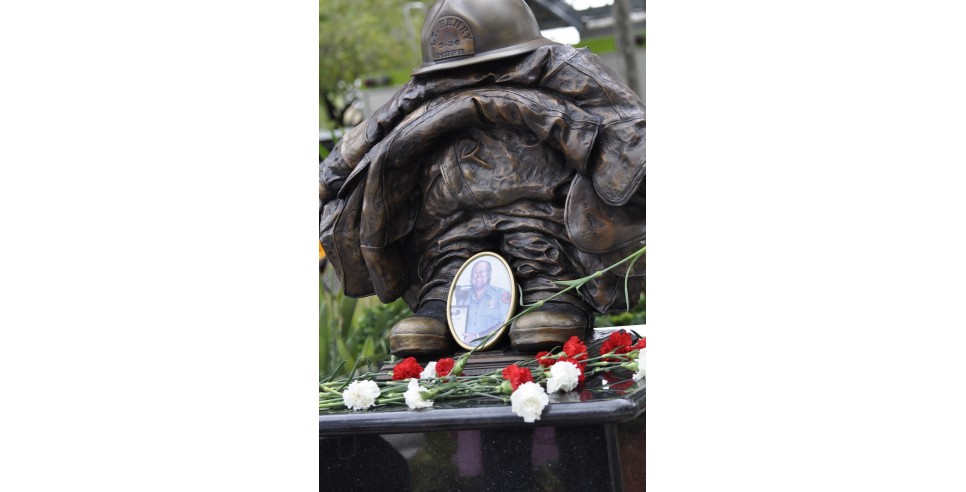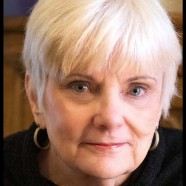
Twenty-two years later, the sounds and images of that day reverberate. The 19-acre complex of buildings called the World Trade Center, considered to be the heart of the financial sector, was forever changed. From the 9/11 Memorial Museum website, the bare facts:
“The hijacked Flight 11 was crashed into floors 93 to 99 of the North Tower (1 WTC) at 8:46 a.m. The hijacked Flight 175 struck floors 77 to 85 of the South Tower (2 WTC) 17 minutes later at 9:03 a.m. When the towers were struck, between 16,400 and 18,000 people were in the WTC complex. Of those, the vast majority evacuated safely. As they rushed out, first responders rushed in trying to save those still trapped or injured.
The fires from the impacts were intensified by the planes’ burning jet fuel.... The five other buildings in the WTC complex were also destroyed because of damage sustained when the Twin Towers fell.
The collapse of the buildings left the site devastated. Thousands of volunteers came to Ground Zero to help with the rescue, recovery, and clean-up efforts, and on May 30, 2002, the last piece of WTC steel was ceremonially removed.”
The facts underlay the human cost. There was a total of five planes and three sites attacked on that sunny morning – a plane crashed into the Pentagon, and 40 passengers on another domestic flight that was bound for the nation’s capital (and who learned through use of their smartphones of the other attacks) rushed the terrorists and forced the plane down in a field in Pennsylvania. Like the police and fire officers that day in Manhattan, they rushed toward death to try to avert more deaths.
Nearly 3,000 people lost their lives that day, and thousands suffered from lung disease and related illnesses as a result of their work at the site in identifying victims and cleaning up the site. President Bush created a 9/11 Commission to examine the events, including root causes and recommendations. Most of those recommendations have been implemented. Other attacks by Islamic terrorists have been identified and foiled in advance as of this writing.
That day also foregrounded latent hatred of Muslims that had been festering in this country for some years. Today it is not necessary to be a Muslim to be shouted at or spit upon – often citizens who have a different skin color are assumed to be one of “them.” More on this topic in another column.
If you are a former student of mine or a reader of this newsletter, you probably have heard what I was doing that morning. I listened on the radio as the first plane hit while gulping down breakfast, then started driving in to my office at Washington Mutual. At that time, roughly 200 people were in my group, including those who were responsible for mainframe recovery. The Seattle office was quiet that morning, with small groups clustered around radios. There was no communication flow from leadership to either the back office or the branches. Instead, I learned that the executives were holed up across the street in what was called an Emergency Operations Center. I finally walked over, knocked on the door, and asked to speak to my boss, the CIO: could I give my staff the option of going home or staying to work? What was the policy? And while I got an answer for my group, other teams played it by ear without any executive guidance.
The result of my questions and recommendations led ultimately to me being appointed chair of the Crisis Management Team (CMT), where we were empowered to act on behalf of the bank when necessary. The business continuity and emergency management groups moved to report to me. We redid everything from the ground up, including reducing the size of the CMT to under 10 executives and rewriting our entire playbook for handing disasters. We set up monthly scenario tests not only in Seattle, but in our key locations around the country. And we joined Chicago First, a group at the time of around eight banks all of whom were committed to improving processes and protocols. Of the many scenario tests we did, my most poignant memory is watching police and fire officers enter St. Patrick’s Cathedral in Manhattan for a 9/11 mass on the same day we were running a scenario test above the Washington Mutual trading floor across the street.
You could say that many useful and positive changes came about from that day, but then you would also have to note that progress was uneven and spotty. The financial sector is probably the most sophisticated in terms of its use of technology and because it is so closely regulated. But when you look at disasters like the Lahaina wildfire in Hawaii, you see that warnings of high risk often go unheeded. And emergency management programs are still underfunded. I continue to advocate for interoperability of first responder radio channels so that actions on the ground can be better coordinated by first responders.
I hope that today you will stop to think about what we lost that day. There was a remarkable opinion piece in the New York Times yesterday, titled “We Can All Mourn on Sept. 11” that discussed the long-term effects of the day on its survivors and their families. But 9/11 also had an effect on the rest of us who were old enough to witness it and its aftermath.
The longer term impact is that such terrible events -- which have by no means stopped happening -- bring forcefully to mind the problems, from business impacts to technological concerns, that lead by multiple pathways to ethical and political problems that require reflection, analysis, and historical attention. Toward such ends, I have been working closely with two UW Information School graduates -- Emily [Oxenford] Hayes, ASA's long-term archivist and editor, and Marie Williams Chant, who has redesigned the entire ASA website, including making searchable my blog and 180 different research notes -- to make all 14 years of the website content and its future more accessible.
On this day, then, remembering is only the first step to thinking ahead to create discourse that links together our daily business with the deep practical and ethical issues we continue to face.
Originally published in ASA News and Notes September 11, 2023









